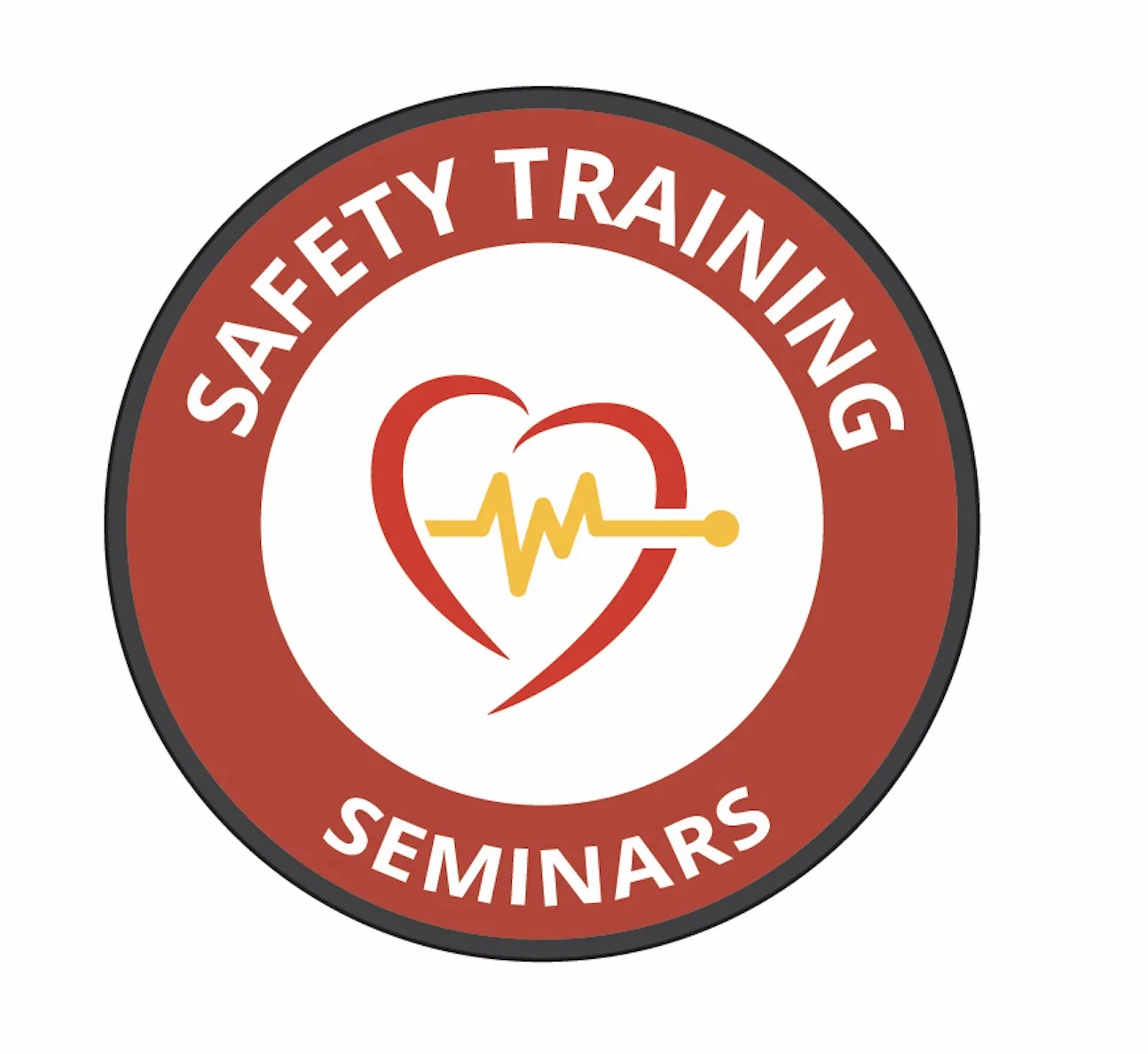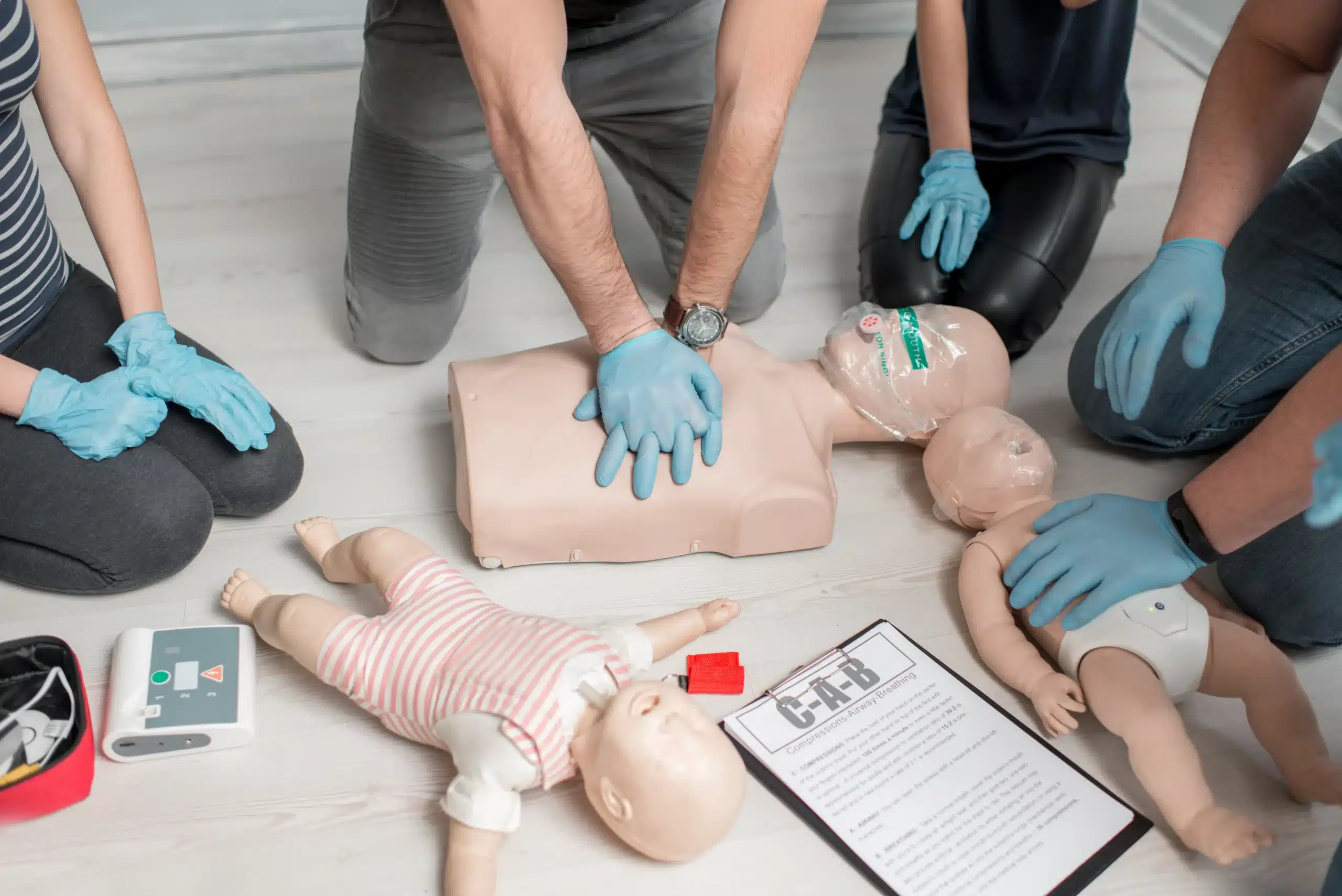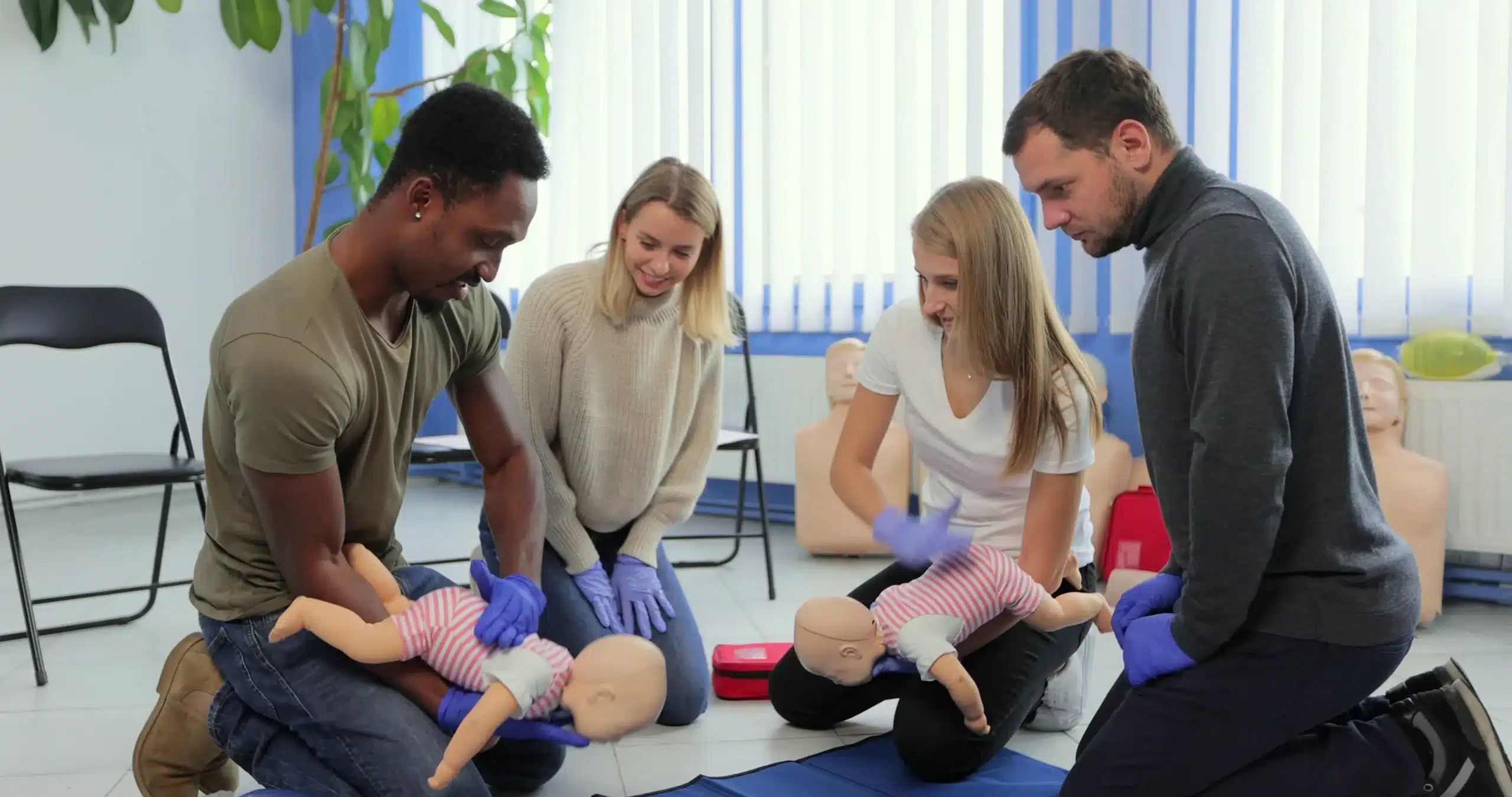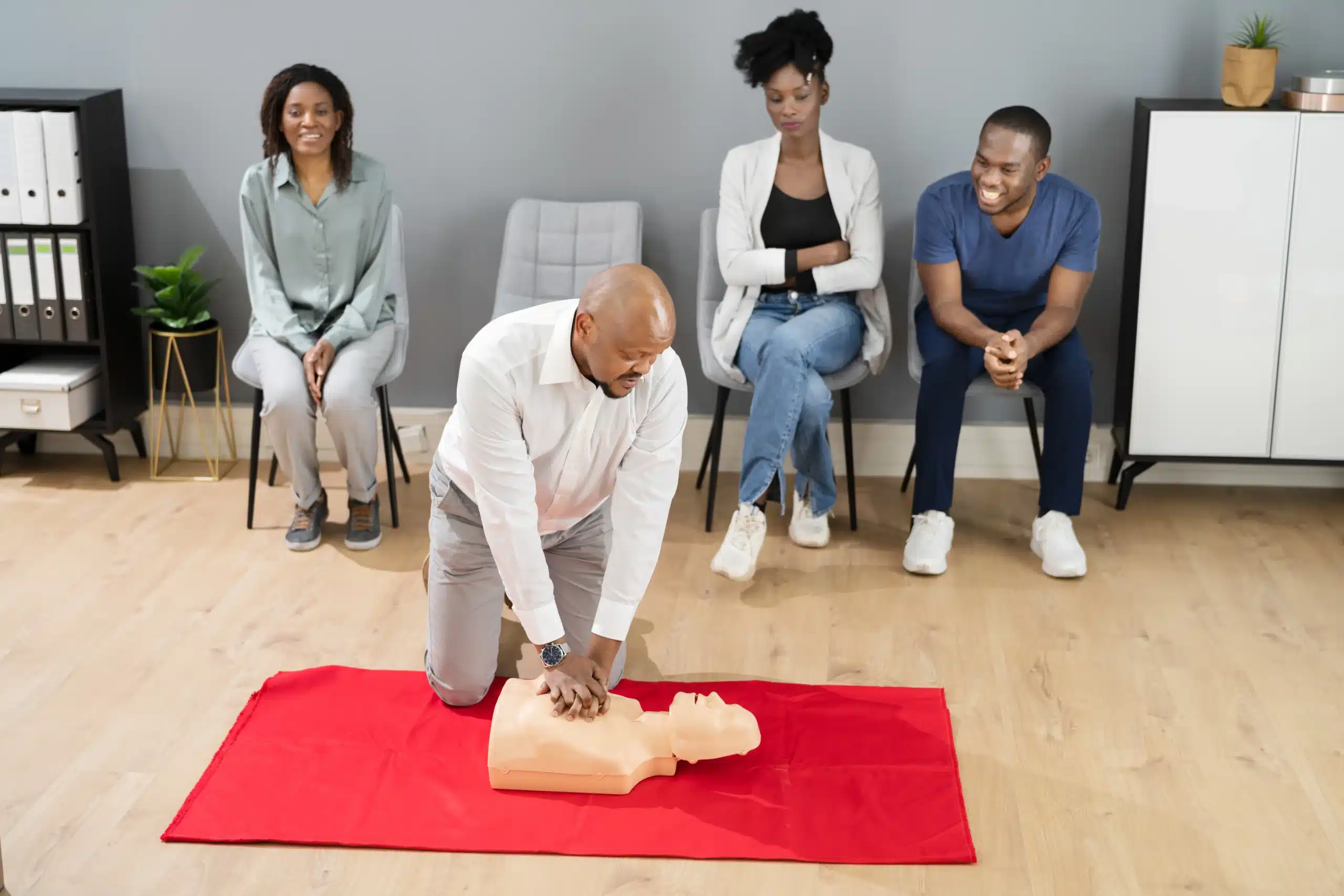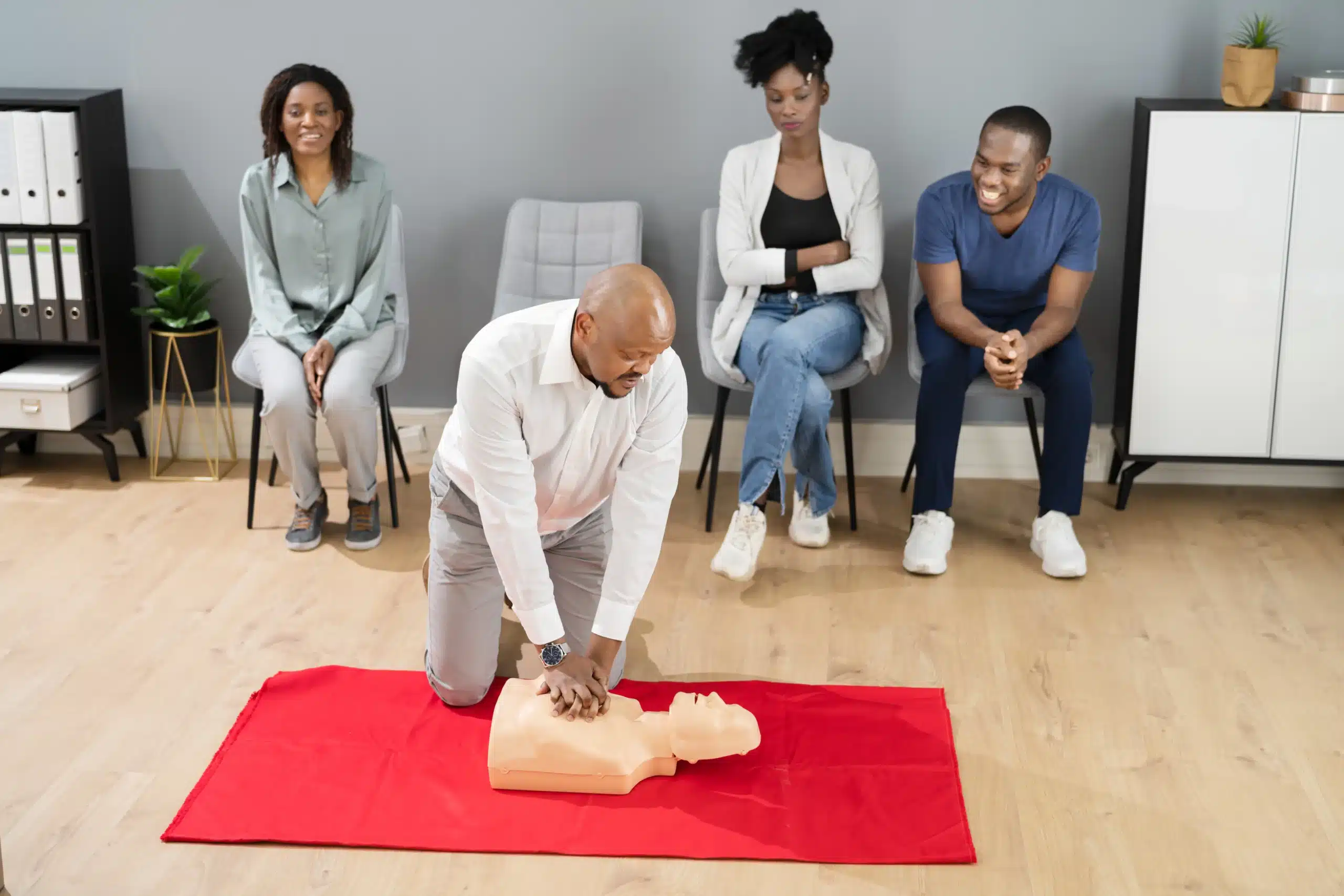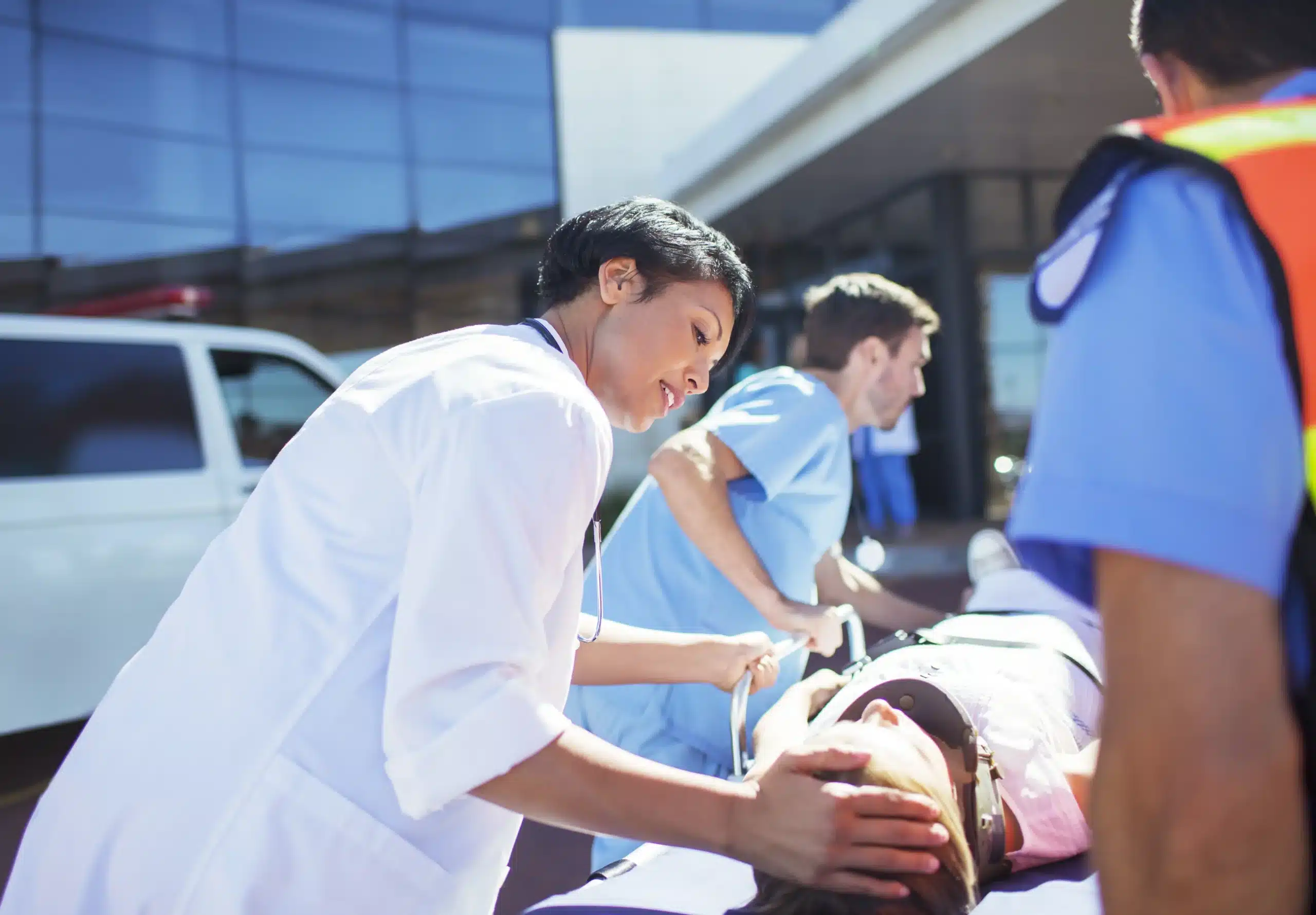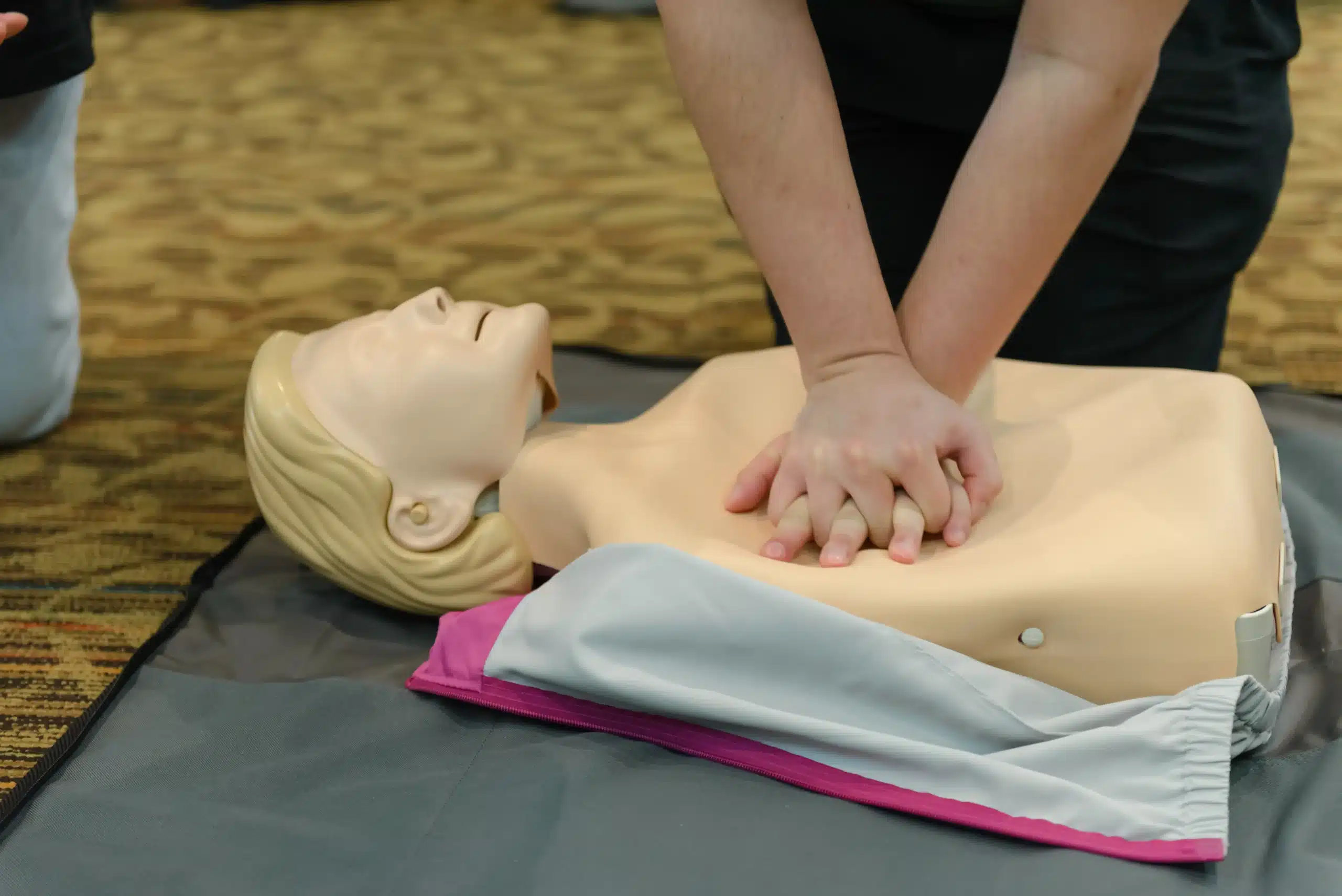Emergencies happen, and knowing how to respond can change everything. BLS classes in San Francisco empower you with the skills to provide immediate care during critical situations, giving you the confidence to act quickly and effectively. This comprehensive guide covers everything from key BLS skills and common myths to finding the best classes and acing your certification. Whether you’re a parent, a teacher, or a healthcare provider, this guide will help you find the right BLS training to make a real difference in someone’s life.
Key Takeaways
- BLS skills empower anyone: These life-saving techniques, including CPR, AED use, and choking relief, are valuable for everyone, not just medical professionals.
- Choose the right BLS class: Select a course format (in-person, online, or blended) that fits your learning style and schedule. Research providers, compare costs, and look for reputable organizations like the American Heart Association.
- Maintain your skills: Practice regularly and renew your certification to stay proficient and up-to-date with the latest guidelines. Utilize refresher courses and online resources to keep your skills sharp.
What are BLS Classes & Why Do They Matter?
BLS (Basic Life Support) classes teach you how to respond to life-threatening emergencies. These classes cover essential techniques like CPR (cardiopulmonary resuscitation), using an AED (automated external defibrillator), and relieving choking. Knowing what to do in these situations can make all the difference, giving you the confidence to act quickly and effectively. BLS training empowers you to provide immediate care during those critical minutes before professional help arrives. It’s about equipping yourself with the skills to potentially save a life.
Key BLS Skills
BLS classes equip you with practical skills to handle various emergency scenarios. You’ll learn how to perform CPR on adults, children, and infants, both with one rescuer and as part of a team. The training also covers how to use an AED, a device that can restore a normal heart rhythm. Additionally, you’ll learn techniques to help someone who is choking, a skill that can prevent a life-threatening situation from escalating. These are fundamental skills that can empower you to act confidently in a crisis.
Who Needs BLS Training?
While often associated with healthcare professionals, BLS training is valuable for anyone. Parents, teachers, coaches, caregivers—anyone who interacts with people regularly—can benefit from these skills. BLS certification isn’t just for medical settings; it’s for everyday life. Knowing how to respond to an emergency can save a life at home, at work, or out in the community. It’s about being prepared and having the skills to make a difference when it matters most.
Common BLS Myths
One common misconception is that BLS certification is only for doctors and nurses. This simply isn’t true. The ability to perform CPR or use an AED is a valuable skill for anyone to have. Another myth is that BLS certification is a one-time thing. In reality, regular renewals are essential to stay up-to-date with the latest guidelines and maintain your skills. Don’t let these myths prevent you from getting trained and being prepared to help in an emergency. Learn more about the importance of staying current with your BLS certification.
Best BLS Classes in San Francisco
Finding the right BLS class can feel overwhelming with so many options. To help you out, I’ve compiled a list of some well-regarded BLS providers in San Francisco. Remember to always verify course details and certification information directly with the provider before registering.
Bay Area CPR
Bay Area CPR offers the American Heart Association’s Basic Life Support (BLS) CPR training, including the convenient HeartCode BLS blended learning option, which combines online learning with hands-on skills practice. This flexibility makes it easier to fit the training into your busy schedule. They have multiple locations throughout the Bay Area, making it easy to find a class near you.
American Red Cross
The American Red Cross is a well-known provider of BLS certification and renewal courses in San Francisco. They offer flexible scheduling and a variety of training options to meet diverse needs. Check their website for class schedules and registration information.
Safety Training Seminars
Safety Training Seminars provides a comprehensive selection of American Heart Association (AHA) courses, including BLS certification. With classes offered daily in over 60 cities, you’re likely to find one that fits your schedule. They are known for their accessible training options for both groups and individuals.
Revive CPR
Revive CPR offers American Heart Association (AHA) certified CPR, BLS, and First Aid classes in San Francisco. They provide same-day certification and blended learning options, making it easy to get certified quickly. This is a great option if you need your certification in a hurry.
CPR Certification Institute
The CPR Certification Institute offers a range of American Heart Association (AHA)-certified courses, including CPR and BLS. They focus on providing accessible training options for groups and individuals. You can find more information about their course offerings and schedules on their website.
What Happens in a BLS Class?
So, you’re signed up for a BLS class—congratulations! What can you expect? BLS certification focuses on providing immediate care during life-threatening emergencies, like cardiac arrest or choking. It’s a fast-paced, hands-on learning experience. Let’s break down what a typical BLS course entails.
Course Length & Formats
BLS classes in San Francisco usually take between four and six hours to complete, depending on the training provider and format. You’ll find options for in-person classes, online courses, and blended learning, which combines online modules with in-person skills practice. Blended learning offers flexibility, while in-person classes at locations like Bay Area CPR provide immediate feedback from instructors and the opportunity to practice with other students. Costs typically range from $50 to $150, as noted by Safety Training Seminars.
Getting Certified & How Long it Lasts
The goal of a BLS course is to equip you with the skills to confidently respond to medical emergencies. You’ll learn CPR, how to use an AED, and essential airway management techniques. Safety Training Seminars highlights how these skills empower healthcare providers and anyone interested in saving lives. After completing the course and passing the exams, you’ll receive your BLS certification, valid for two years.
Hands-on Training
BLS classes are highly interactive. Expect significant hands-on training using mannequins and AED trainers. The American Red Cross notes that programs cover single- and multiple-responder CPR scenarios and AED use. This practical experience builds your muscle memory and confidence, preparing you to act quickly in real-life situations.
Class Size & Individual Attention
To ensure personalized instruction and ample practice time, BLS class sizes are often limited. Bay Area CPR, for example, caps classes at six students. Smaller classes allow instructors to provide individual feedback and address specific questions, creating a supportive learning environment.
Find the Right BLS Class
Choosing the right BLS class involves several key considerations. Think about your learning style, schedule, budget, and the reputation of the training provider. Finding the right fit will ensure you get the most out of your training.
In-Person, Online, or Hybrid?
First, consider which learning environment best suits you. Do you thrive in a traditional classroom setting with face-to-face interaction? Or, would you prefer the convenience and flexibility of an online course? Many providers offer in-person classes, online courses, and blended learning options that combine both. This variety allows you to choose a format that aligns with your learning style and schedule. For example, blended learning might involve completing the coursework online and then attending an in-person session for hands-on skills practice. Bay Area CPR offers a variety of formats to choose from.
Flexible Scheduling
Life gets busy, so finding a BLS class that works with your schedule is essential. Look for training providers that offer a range of class times and dates. Bay Area CPR, for instance, provides courses throughout the San Francisco Bay Area, including San Francisco, Daly City, San Mateo, and Oakland, with flexible scheduling to accommodate various needs. Whether you’re a busy professional, a student, or a parent, you should be able to find a class that fits your availability. Some providers even offer weekend or evening classes.
Cost & Discounts
BLS class prices can vary, so it’s wise to compare costs from different providers. While cost is a factor, remember that the cheapest option isn’t always the best. Consider the value you’re receiving for the price. Does the course include all necessary materials? Are there any hidden fees? Many reputable providers offer discounts for groups, students, or early registration. Check if a low-price guarantee is available, which can provide additional peace of mind. CPR Certification San Francisco offers competitive pricing and transparent cost information.
Quality Training & Provider Reputation
Finally, research the quality of training and the reputation of the provider. Look for courses certified by reputable organizations like the American Heart Association. Read reviews and testimonials from past students to get a sense of their experience. A provider’s reputation can speak volumes about the quality of instruction and the overall learning experience. Consider factors like instructor experience, the curriculum’s comprehensiveness, and the availability of support resources. Choosing a well-respected provider will ensure you receive high-quality training that meets industry standards. You can find AHA-certified BLS classes at Bay Area CPR.
Ace Your BLS Certification
Getting your BLS certification is a rewarding experience. Here’s how to make the most of it, from preparation to renewal:
What to Bring & Expect
BLS certification equips you with life-saving skills. You’ll learn CPR, how to use an AED, and how to help someone who is choking, giving you the confidence to assist in medical emergencies. Come prepared with a pen and notepad to take notes, and dress comfortably for the hands-on practice. Expect a combination of instruction, demonstrations, and practice scenarios. A good BLS class offers ample opportunity to practice these essential skills.
Tips for BLS Success
One key to success in your BLS class is to actively participate. Ask questions, engage in discussions, and take advantage of every practice opportunity. Don’t be afraid to make mistakes—that’s how you learn! After your class, regularly practice your BLS skills to maintain proficiency. You can also use online resources to stay updated with the latest BLS guidelines and techniques.
Resources & Support After Certification
Many BLS certification courses offer several learning formats to fit your schedule and preferences. Some providers, like Safety Training Seminars, offer additional resources and support after your class. This might include refresher materials, online communities, or access to instructors for ongoing questions. Take advantage of these resources to solidify your skills and stay confident in your abilities.
Renewing Your Certification
Like most medical certifications, BLS requires renewal to ensure your skills are current with the latest American Heart Association guidelines. Check with your certifying organization for specific renewal requirements and timelines. You can often find streamlined renewal courses to help you quickly and efficiently maintain your certification. Staying current with your BLS certification demonstrates your commitment to providing high-quality care and ensures you’re always prepared to respond to emergencies.
Frequently Asked Questions
Why is BLS training important for everyone, not just healthcare professionals? BLS skills empower anyone to respond effectively in emergencies like cardiac arrest or choking. While crucial for healthcare providers, these skills are equally valuable for parents, teachers, coaches, caregivers—anyone who interacts with others regularly. Knowing how to react can make a critical difference before professional help arrives, potentially saving a life in various settings, not just medical ones.
What can I expect during a BLS class? A typical BLS class is a dynamic, hands-on learning experience. Expect a mix of instruction, demonstrations, and lots of practice. You’ll learn CPR techniques for adults, children, and infants, how to use an AED, and how to relieve choking. The class size is usually kept small to allow for personalized feedback and ample practice time on mannequins and training equipment.
How do I choose the right BLS class for me? Consider your learning style and schedule when selecting a BLS class. Do you prefer in-person instruction or the flexibility of online learning? Look for providers offering various formats, including blended learning, which combines online modules with in-person skills sessions. Also, compare costs, check for available discounts, and research the provider’s reputation and certification to ensure you receive quality training.
What kind of resources and support are available after I get certified? Many BLS providers offer resources to help you maintain your skills after certification. These can include refresher materials, access to online communities, or ongoing instructor support for any questions. Take advantage of these resources to stay sharp and confident in your abilities.
How do I renew my BLS certification? BLS certification typically requires renewal every two years to keep your skills aligned with the latest guidelines. Check with your certifying organization for specific requirements and timelines. Many providers offer streamlined renewal courses to make the process efficient and convenient. Staying current with your certification demonstrates your commitment to providing effective care in emergencies.
